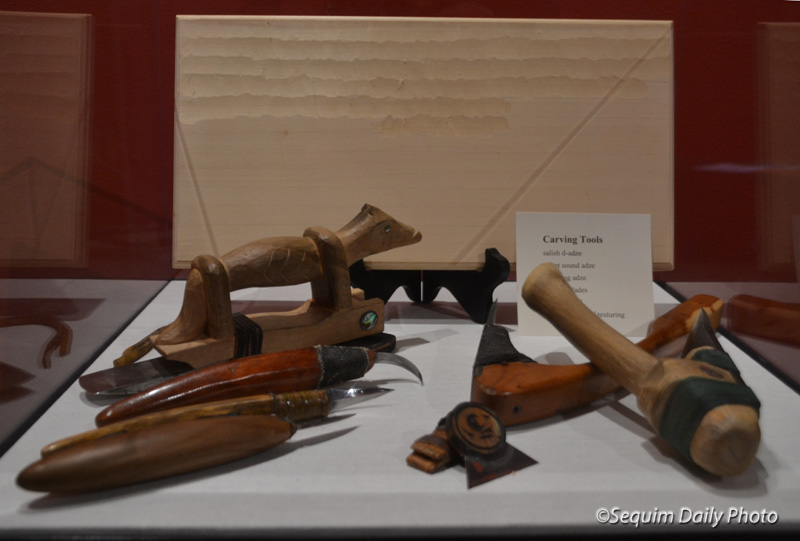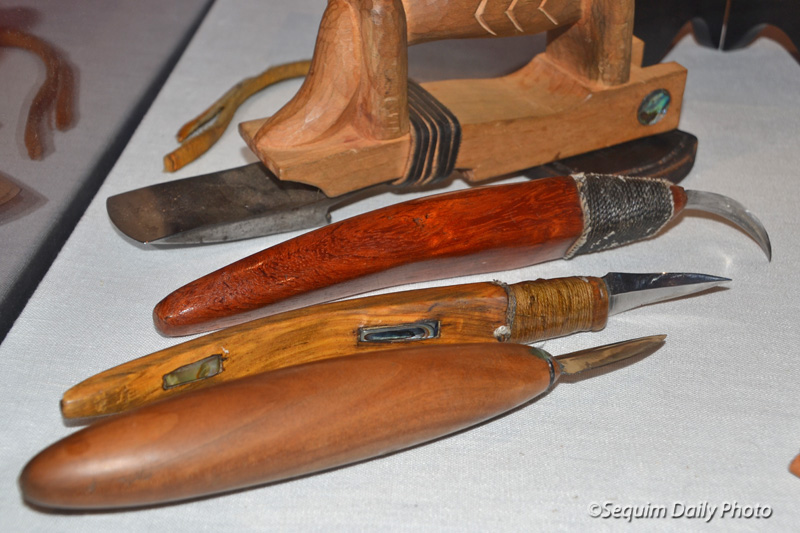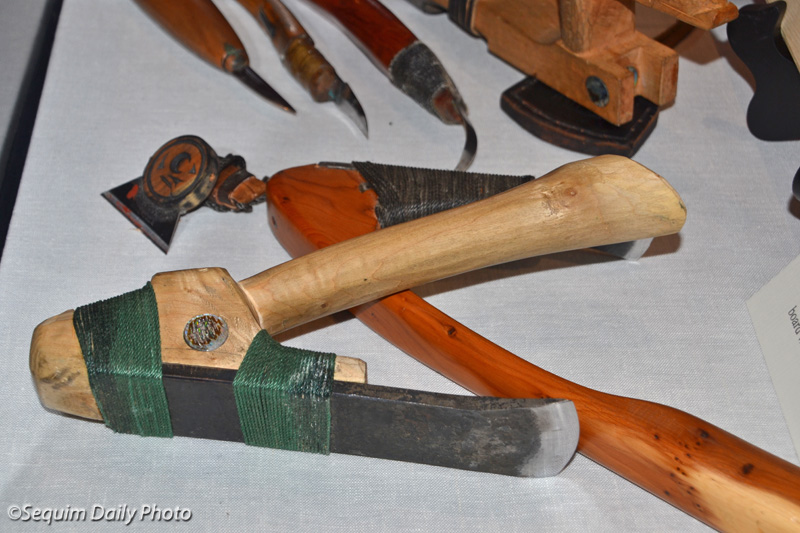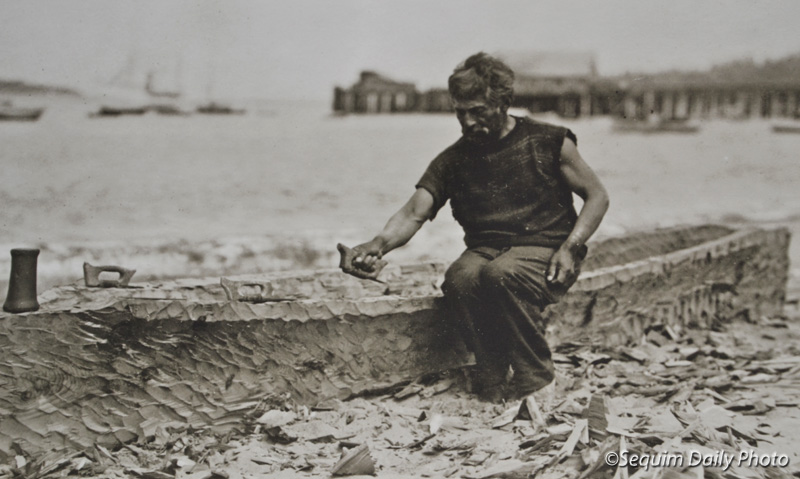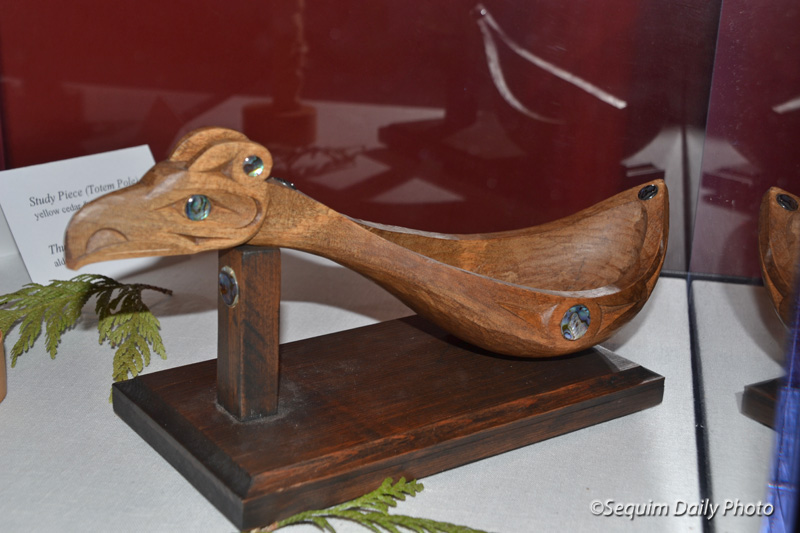
The carvings of Dusty Humphries, Sr. were featured at the Peninsula College Longhouse for three months recently. I got there last week on the second to last day of the exhibit. I’m sorry I couldn’t publicize the beautiful show to locals before it closed.
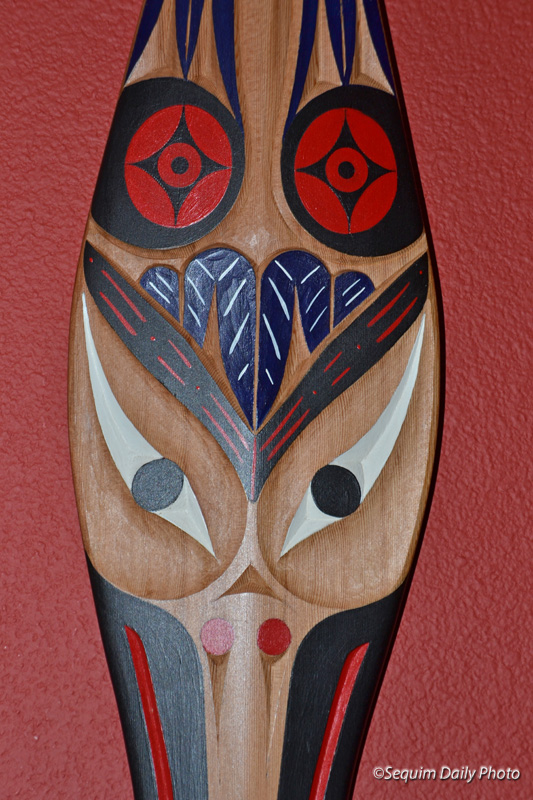
Humphries is of the Jamestown S’Klallam and Makah Tribes and his work explores Native American themes. The detail above is part of a seabird paddle.
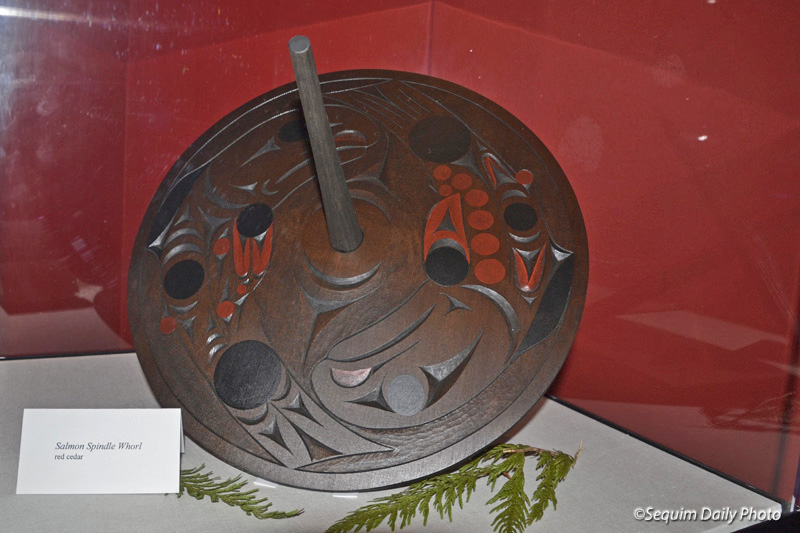
This is a Salmon spindle whorl. I’ve lightened the shot to show more of the detail. It’s a deeply colored red cedar piece, approximately 18 inches (approx. 1/2 meter) across.
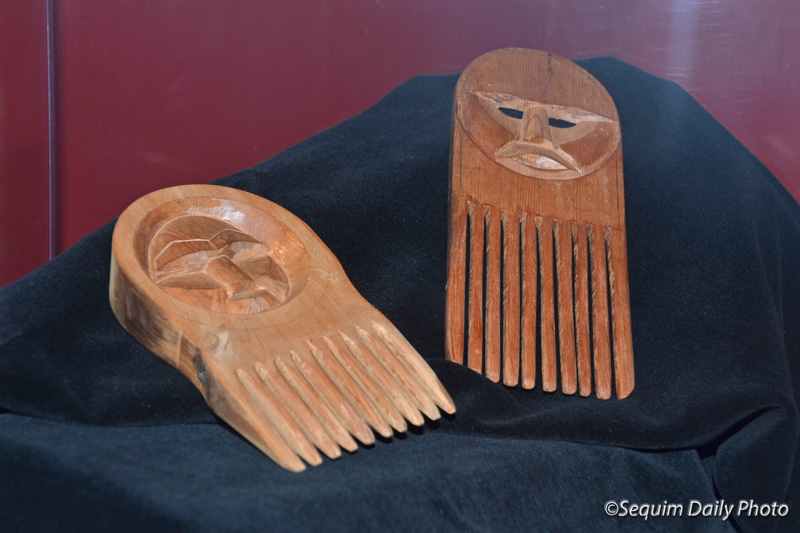
Early versions of these contemporary combs have been found in local archaeological digs. Similar pieces from one dig were displayed by the Lower Elwah Tribe a couple of years ago but photos were not allowed. I was pleased to photograph these contemporary beautiful, functional pieces.
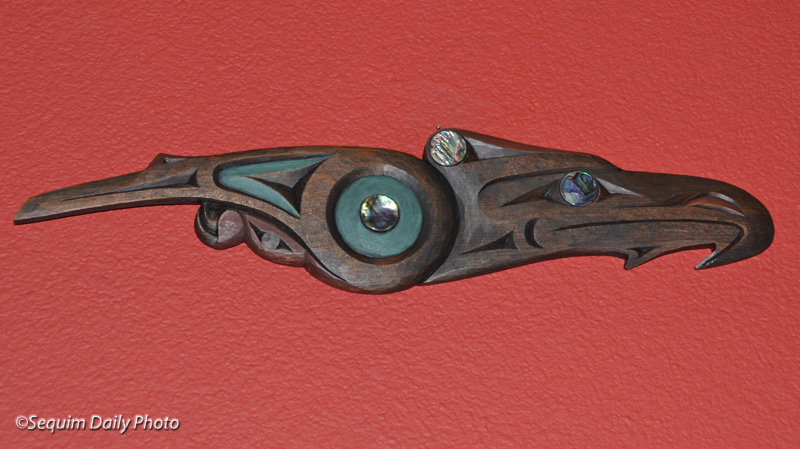
This piece was carved from yew with applied abalone shell. There were other works on display but these were some of my favorites.
